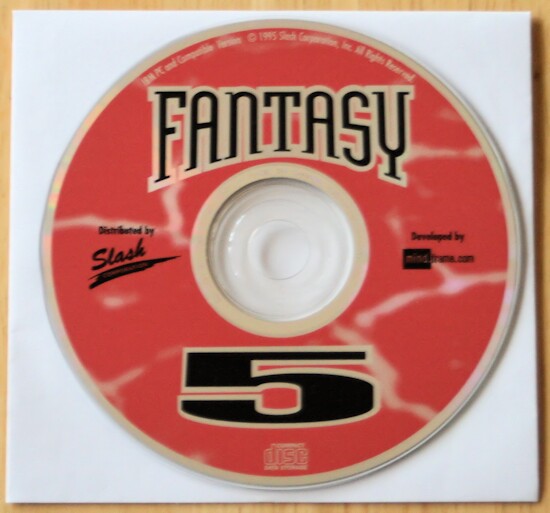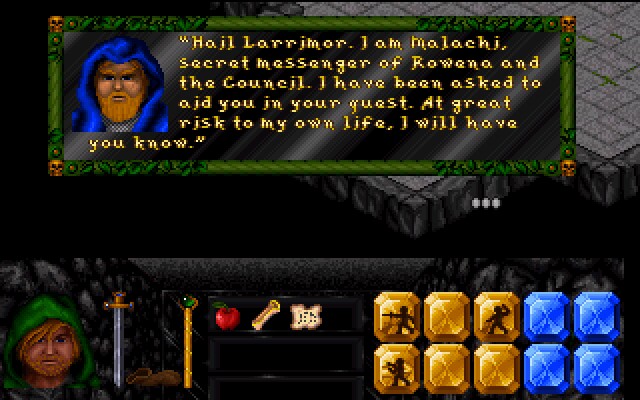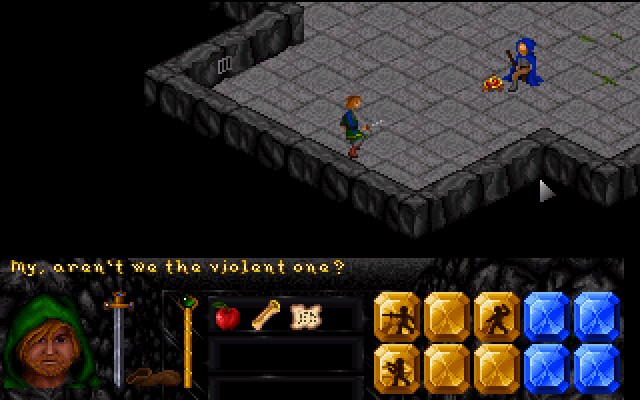
Actual Game
The Summoning1-Click Install
|
The Game
The Summoning is set in a world ravaged by the effects of an earlier conflict between gods and men. During this conflict, the gods of Magic, War, and Intellect were thwarted in their desires to subjugate men by the efforts of a warrior king, named Borel. Unable to best Borel's army, the Gods withdrew to a great tower to heal themselves and re-plan their campaign. Borel followed the gods into their tower, to meet them in single combat, and was overcome by the devilish traps and devices the gods had set to guard them. Thereafter many heroes attempted to meet the challenges of the tower, until finally one came who was destined to overcome both the traps and the gods, banishing them from the world of men. Now, a generation later, a new threat has arisen to the still war-scarred lands of men. A great sorcerer, known only as Shadow Weaver, has arisen to wage war anew. Operating from the heart of a labyrinth on his island kingdom, he has sent his hordes of evil to crash like great waves upon the unprepared armies of men. In desperation, the council of wizards have called upon their powers to identify a new hero, someone from the bloodline of that same hero who overcame the gods, to go forth and meet this new threat. Armed only with a few months of training in both arms and magic, and a few words of advise from the council, a hero is teleported into the labyrinth with the commission to stop Shadow Weaver at all costs.
The basic premise of The Summoning should be well-known to most fans of fantasy literature: while the armies of men are entangled in a brutal and hopeless war with the armies of darkness, a lone adventurer is chosen to penetrate behind the enemy lines and strike a killing blow to the evil commander. Despite the fact that the basic plot has been well used, Chris Straka, the creative designer, has done a good job of combining plot twists, surprises, and hidden quests into an integrated storyline that grabs and holds the attention. Adding to the enjoyment of this game is a unique magic system, a well-written manual that provides both detailed gaming instructions and interesting background information, and a gaming system that is intuitive, consistent, and well-implemented.
Magic is divided into four categories: Sorcery, Wizardry, Enchantment and Healing. Each category of magic contains approximately eight possible spells that must be learned by finding spell parchments. Upon the spell parchments are recorded the series of hand gestures that constitute the spell. Once a parchment is found, the movements may be recorded or memorized, and the parchment may then be discarded. To cast a spell, the player selects a series of hand gestures. If the right gestures are selected, a spell icon appears in one of the four magic areas at the bottom of the display. In the beginning of the game, the player's magical abilities are limited in four ways: 1) by the number of spell points available, 2) by the experience of the character in each of the magical arts, 3) by the hand gestures available to the character, and 4) by the spells known. The experience of a character in one of the magical arts governs both the strength of the unleashed spell and the number of spells of a particular kind that a character can have readied. Once a player has found a parchment, the hand gestures involved in the particular spell are available to the character. It is not necessary to find the parchment for a particular spell to discover it...if one is willing to take the time to experiment with gesture combinations. The weaker spells involve only a few gestures (usually three), while the more powerful spells involve as many as eight gestures.
The real-time nature of the game is frozen during spell selection, so having spells readied is not as important as watching the remaining spell- points. When released, a corresponding read-time effect is displayed on the screen. In contrast to most RPGs, there is no conflict between being a magician and a warrior. There are no penalties to magical abilities for wearing armor or fighting with edged weapons. In fact, most of the enchantment-type spells involve temporarily improving the abilities of the character in battle. There are a host of both offensive and defensive spells, and a set of spells to repair battle damage. Since the character is thrust into Shadow Weaver's labyrinth alone, he or she must be well- versed in both the magical and martial arts to survive.
The manual is 90 pages long, and contains both background information about the setting for The Summoning, and fairly detailed information about game play. The background information is well-written and is in the form of a narrative from the perspective of the head wizard of the council. It details the selection of the new hero, and is as good as most fantasy literature published today. The manual mentions that some people might feel that the detailed gaming information contained in the manual is cheating, so information like the rune effects and the bestiary (where the weaknesses of each of the monster types is explained) are relegated to the back of the manual where they need not be accessed. I feel that any self- respecting hero would have a certain amount of familiarity with his opponents, so I didn't feel guilty about using the manual. I found the gaming instructions in the manual to be very helpful, and referred to it frequently (especially to find out the meaning of the magical runes that are found in the game). The manual also contains a few pages dedicated to recording the spells that the character has discovered, which I found most helpful.
The user-interface is one of the crowning achievements. The game is real-time, and most of the display is dedicated to a perspective view of the character and his or her surroundings. This is an "overhead and to the right" type of view. The overhead view scrolls smoothly as the character moves, keeping the character more-or-less centered. The bottom tenth of the screen is dedicated to a portrait of the character, a couple of lines of inventory, and the status of his hands (with readied weapons), and spells. This status display can be grabbed with the mouse and extended (like pulling down a shade), making the rest of the character's inventory available, as well as displaying experience information, and a detailed display of the character's body to show armor in use and readied weapons. The player interacts with inventory items by grabbing them with the mouse and moving them to the character's body. Most items must be held in either hand to be used. Things that are worn are "dropped" onto the character's body and become part of the display both at the portrait level and on the overhead view (ie, when you put on a helmet, both the detailed body display and the overhead view of the character shows the helmet).
In summary, The Summoning represents a solid entry into the ranks of computer RPG. The user interface is a joy to use, and easy enough for young children to master. The storyline is rich, filled with twists and surprises, and the quests and puzzles are challenging. More importantly, the puzzles and challenges are both motivated and consistent with the gaming world, providing a captivating gaming experience.






